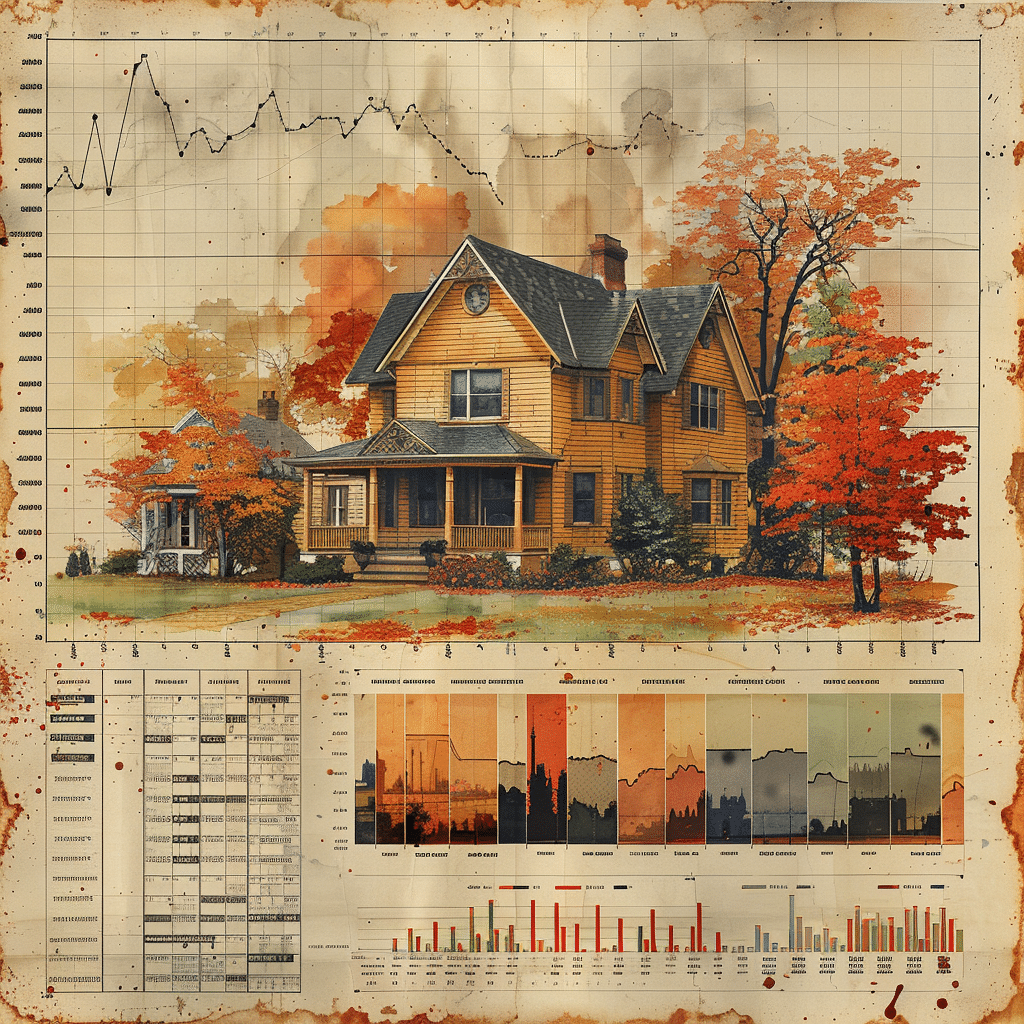A Comprehensive Analysis of Mortgage Rates over time
Mortgage rates have been like a wild roller-coaster ride, with every twist and turn influenced by a plethora of factors that could leave even seasoned economists reaching for a playbook. Since way back when, in the disco-dancing ’70s, all the way to our modern-day hustle, these rates have danced to the beat of economic events, policy decisions, and technological advances. By diving into the mortgage rates historical chart, we will explore just what sent those rates soaring sky-high or tumbling down in an effort to pinpoint the heartbeats of the housing market’s past and use these insights to catch a glimpse of the future.

Identifying Historical Patterns in Mortgage Rates
Picture the 1970s: bell-bottoms, disco balls, and the oil crisis. While people grooved to vinyl, mortgage rates were doing a little dance of their own, soaring as a reaction to the energy crisis. Enter the era of Adjustable-Rate Mortgages (ARMs) — financial instruments that threw a lifeline to borrowers when fixed rates were sky-high.

| Year | Average 30-Year Fixed Mortgage Rate (%) | Key Economic Factors Influencing Rates |
| 2013 | 3.98 | Recovery from 2008 financial crisis |
| 2014 | 4.17 | Continued economic growth |
| 2015 | 3.85 | Oil price shock, monetary policy changes |
| 2016 | 3.65 | Brexit vote, U.S. presidential election |
| 2017 | 3.99 | Steady economic growth, fiscal stimulus |
| 2018 | 4.54 | Fed rate hikes, inflation concerns |
| 2019 | 3.94 | Trade tensions, global economic slowdown |
| 2020 | 3.11 | COVID-19 pandemic, economic uncertainty |
| 2021 | 2.96 | Low federal funds rate, economic recovery |
| 2022 | 3.45* | Inflation, Federal Reserve policy changes |
Comparing Decades: Mortgage Rate Peaks and Valleys
Ever played a game of economic limbo? That’s what it feels like when reviewing historical peaks and valleys of mortgage rates. The year 1981 stands out like a sore thumb with records that still make today’s rates look like ants at a picnic. But don’t let that scare you — there’s plenty of lessons ingrained in those peaks.
The Influence of Federal Policy on Mortgage Rate Trends
Oh, the power that lies in the hands of the Federal Reserve! With the flick of a pen and a nudge of the interest rate, they’ve chiseled the course of mortgage history. But it’s not all buttoned-up in federal buildings; government incentives have sweetened the deal for homeowners, leaving a lasting imprint on the chart of rates.
Understanding Today’s Rates in Context of History
Today’s rates might seem confusing, but they’re part of a larger story, a chapter in an extensive saga that dates back to times when bank tellers actually knew your name. Comparing current figures to the tales of yesteryear provides context and clarifies just how technology and newfangled financial products are changing the game.
Predicting the Future: Lessons from the Mortgage Rates Historical Chart
Predicting the future might be a job for a clairvoyant, but analyzing mortgage trends is a job for the thorough and the thoughtful. By extrapolating from long-term patterns and assessing factors like today’s geopolitical tensions and economic policies, we get a clearer picture — not perfect, but pretty darn good.
Navigating Your Mortgage Strategy with Historical Insights
Now we’re talking tactics. It’s like chess, but instead of pawns and knights, we’re playing with market trends and interest rates. You can use the boom and bust rhythm of history to your advantage when you’re looking to buy your dream home or when you want to refinance that white-picket fence wonderland.
Charting the Future of Homeownership: Innovative Perspectives on Traditional Data
The mortgage rates historical chart is a veritable treasure map, and those who understand how to read it might just strike gold — or at least save a pretty penny. By decoding this mural of financial history, we arm ourselves with the knowledge and insight to brace for market shifts.
Friends, the story told by the dips and dives of the mortgage rates history graph is one of resilience, adaptation, and opportunity. As we stand on the precipice of tomorrow, let us take the lessons learned, the historical wisdom distilled, and march confidently into the future of homeownership. With the mortgage rates historical chart as our guide, we are poised to become the architects of our financial destiny, paving the path to a home that reverberates with the soul of our personal soulful revolution.
Unraveling the Mysteries of Mortgage Rates Historical Chart
When you think about mortgage rates, you might not immediately connect them to the glitz and glamour of Hollywood. Yet, if mortgage rates were a movie, they’d probably cast someone as vibrant as Emily Alyn lind in the lead role. Picture this: mortgage rates have been the star in a riveting drama of economic twists and turns, with a plot that’s been thickening for decades. Like a skilled actor, they’ve climbed to dizzying heights, capturing headlines in the 1980s with skyrocketing double digits. Then, in a performance worthy of an Oscar, they’ve managed to swoop down to historical lows in recent years, performing a financial ballet that homeowners have watched with bated breath.
But wait, there’s more to this story. Ever seen something as unexpected as sexy red Kids boots in the middle of a fashion runway? That’s how surprising it was when the mortgage rates in the 1970s were as unpredictable as a runway show, changing faster than fashion trends. One has to admit, there’s something almost whimsical about the way economic factors come together in this scenario. It’s as if lifestyle Diseases are Caused by a combination Of What variables – here being economic indicators – that shape the ebb and flow of these rates over the years. The historical chart is a colorful tapestry, reflecting the overall health of the economy, much like the factors influencing our well-being.
As you take a closer look, squint a bit, and you might see some striking parallels between the trends in mortgage rates and the unexpected themes of pop culture. For instance, the spike in rates during the late 2000s could be symbolically paired with the boldness of Cardi n Tits on the music charts—both defining moments that commanded attention and sparked conversations. The ever-shifting landscape of mortgage rates can be wild and unpredictable, a rollercoaster ride that mirrors the ups and downs of a hit song on the Billboard charts.
So, the next time you’re reviewing a mortgage rates historical chart, remember, it’s not just a collection of numbers and percentages. It’s a historical script filled with drama, surprises, and a cast of economic forces that would give Hollywood a run for its money. And just like any blockbuster, the historical trends of mortgage interest rates leave us on the edge of our seats, wondering what the next scene will bring.




